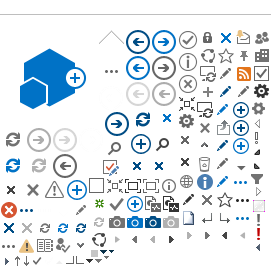Rationale for Activity | The purpose of this Working Group is to develop a specification capable of supporting new services implementing each their own behavior and their own syntax. This Working Group, to be known as the Cross Support Transfer Service, will provide:
1) The Framework: a set of procedures defining the behavior required for the establishment and the release of an association and the behavior required for the exchange of information for new data transfer services. To demonstrate the use of this data type indifferent specification, this Working Group will develop a recommendation including the Association Control, the Generic Procedures, the Operations and the Common Principles for the new services.
2) Concept: this informative book will provide an introduction to the concept associated to the Framework and the definition of new services.
3) Guidelines: the Recommendation will be complemented by prescripitve Guidelines describing the definition of new services and a Concept Definition for introducing the overall approach.
Once defined the Framework recommendation will be the basis of the definition of the Monitored Data Service and the Streaming Tracking Data Service. Subsequently, the Forward Frame Service and the Service Control Service will be developed.
The Framework recommendation will be the baseline for the implementation of a prototype demonstrating the Framework concept.
A subset of the Monitored Data Service functionality will be the baseline for the implementation of a prototype demonstrating the interoperability.
The Streaming Tracking Data Service will be the baseline for the implementation of the prototype demonstrating the interoperability.
A subset of the Forward Frame Services functionality will be the baseline for the implementation of a prototype demonstrating the interoperability.
A subset of the Service Control functionality will be the baseline for the implementation of a prototype demonstrating the interoperability.
In the context of the CSTS service definitions it has become clear that the description of the so called production gear underlying the CSTS services, need to be described in terms of semantics, interaction and monitored parameters and control actions. The latter are in particular relevant for CSTS-MD and CSTS-SC. For that purpose the CSTS WG has come up with the concept of Functional Resources.
Functional Resources are abstract representations of the functionality needed to provide space communication and navigation services provided by a Tracking, Telemetry, and Command (TT&C) service provider (e.g., a ground station), defined at a level of granularity sufficient to specify the configuration parameters, monitored parameters, notifiable events, and control actions that may be requested. Functional Resources contain the information that configures, controls, and/or monitors the characteristics of the interfaces between the TT&C service provider and the user ground element(s) (e.g., spacefilght Mission Operation Center) and user space elelemnts (e.g., Mission spacecraft) - e.g., frequencies, modulation schemes, coding schemes, virtual channel organization, and terrestrial transfer services. Real implementations of TT&C service provider systems map these Functional Resource parameters, events, and directives onto the the physical equipment that actually performs these functions.
Functional Resources provide a standard representation of TT&C service provider functionality in CCSDS standards for cross support transfer services and cross support service management.
The CSTS WG will define Functional Resources relevant in the context of an ground station and will ensure proper registration, publication and update of those Functional Resources as a SANA registry.
In parallel with this activity, the Cross Support Transfer Service WG will ensure the maintenance of the existing SLE books: CLTU, FSP, RAF, R-CF and R-OCF. The working group will also ensure the maintenance of the SLE API books.
|
Management Risk Mitigation Strategy | The approach shall ensure extensibility to ensure that definition or new procedures and operation does not require a major rework of the Framework recommendation.
Lack of resources or reassignment of resources is a constant risk to all standards-development processes. Lack of sufficient budget to ensure that the Working Group members can participate in all meetings. As alternatives videoconferences, teleconferences, and email will be utilized whenever possible to reduce costs. |


